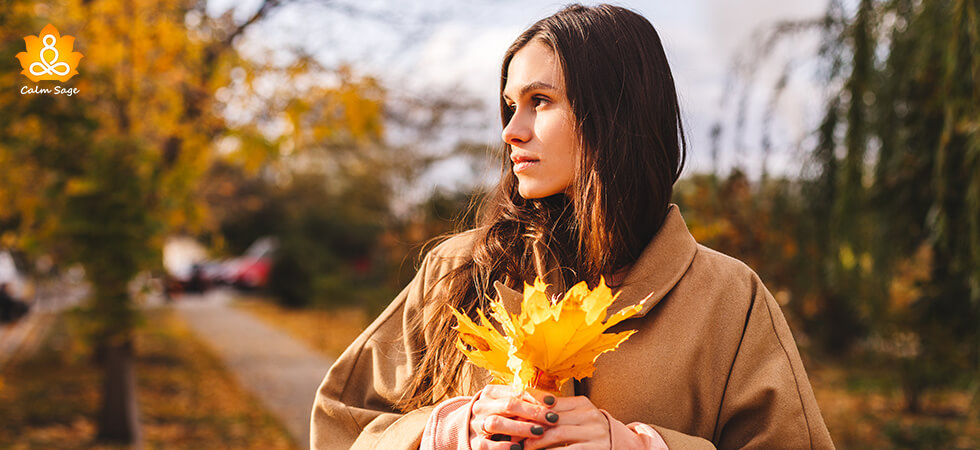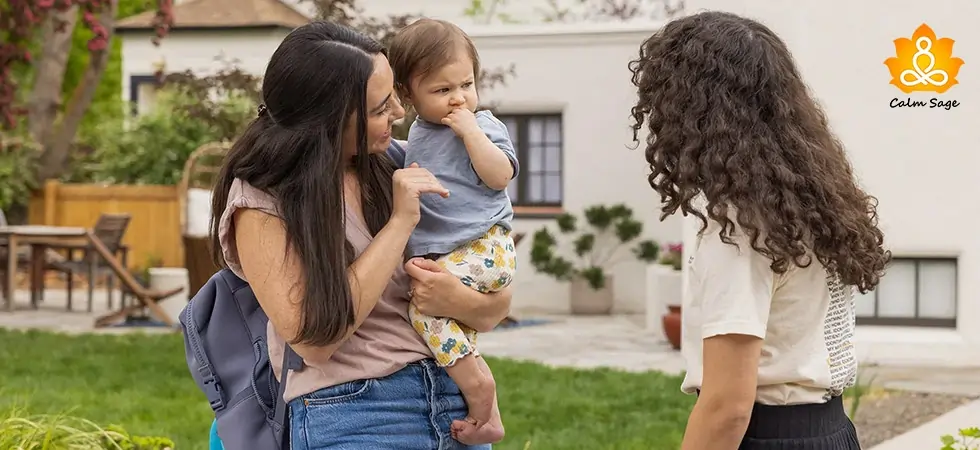Autumn Anxiety Is Real – Why It Happens And How To Deal With It

The sweater season is almost here! It’s that time of year when the chill in the weather isn’t too much, when the scent of pumpkin spice is everywhere, and when all you want to do is curl up in your favorite blanket. But do the autumn or fall seasons make everyone feel mellow? Or does it bring feelings of anxiety?
While many (like me) would claim autumn as their favorite season, there’s no denying that the season can bring mixed emotions. As summer begins to lose its shine, it can make one lose their happy mood too. Autumn anxiety – as this condition is being dubbed – can make you experience symptoms of anxiety and reduced mood in the months of autumn.
Autumn Anxiety is Real and It can Be Overwhelming Too
Get Matched with the Therapist
Anxiety in autumn isn’t uncommon. Autumn Anxiety isn’t caused by any external triggers (not obvious ones, at least) and occurs annually. You can have autumn anxiety and may not even know it!
For highly-sensitive people, who experience anxiety symptoms almost every day – and for people with Seasonal Affective Disorder (SAD), seasonal changes can bring with them a large number of symptoms that can make them feel even more anxious.
Let’s take a look at what autumn anxiety is, its symptoms, why it happens, and how you can work through it.
What Is Autumn Anxiety?
Autumn Anxiety – the term was first used in 2005 – can be a part of seasonal affective disorder. Even if you don’t struggle with anxiety disorders, SAD, or any other disorders that often accompany the symptoms of anxiety, you can experience some nervousness as the fall season approaches.
With autumn comes new changes such as new class timetables, new jobs, cooler weather, shorter days, and holiday stress. It’s no wonder that people experience anxiety. While it occurs annually, once you notice a pattern, it can become easier to take the right steps toward dealing with autumn anxiety.
The symptoms of autumn anxiety that can help you identify it can include:
- Low mood
- Depressive symptoms
- Excessive worrying
- Feeling irritable than usual
- Feeling fatigued or tired
- Sleeping more than usual
- Loss of interest in activities
Apart from these common symptoms of autumn anxiety, you’re more likely to notice a change in your eating habits, sleeping habits, and routine. More often than not, these symptoms can come from natural changes such as a reduction in sunlight that can cause an increase in melatonin and a decrease in serotonin.
Other factors such as behavioral changes can also occur because we tend to spend more time indoors and less time engaging in physical activities outdoors.
Why Does Autumn Anxiety Happen?
Psychologists can agree that changes in seasons can bring a lot of mood swings, anxious behaviors, and other behavioral changes. While autumn anxiety isn’t an official diagnosis, it can still cause significant distress in the lives of those who experience this condition.
When we talk about Seasonal Affective Disorder, we talk about how much shorter the days get, and how much the weather cools. We don’t talk about how anxiety is often mixed in with seasonal affective disorder. There can be the anxiety of starting school, the nervousness of meeting new people, and whatnot.
Experts tend to believe that Autumn Anxiety can be anticipatory anxiety about experiencing Seasonal Affective Disorder.
Here are some other reasons why autumn anxiety may happen:
1. Life Transitions:
If you’re going through a major life change such as adjusting to a new schedule for school then you may feel anxious about getting up early, not getting enough sleep, or even meeting new people if you also struggle with social anxiety.
2. Negative Reaction:
Not everyone has the same reaction to colder months as others. As you step into autumn, you may inadvertently recall a memory that makes you feel that colder months are tough. This can be termed “Anniversary Reaction” and can occur usually around the times when it’s easier to recall a traumatic event. Recalling such an event can bring feelings of depression and grief.
3. End Of Summer:
Some people feel anxious and depressed when they realize that summer is ending and they haven’t accomplished the goals they’d set for themselves in the summer months. Also, if you had a great summer, you may feel depressed when you feel it’s ending.
4. Holiday Stress:
Not all holidays are enjoyable for everyone. Holidays can bring with them significant stress as well. If you feel anxious as Thanksgiving or Christmas approaches, then you might experience autumn anxiety. This can be a more common cause in people who have estranged families, toxic families, or struggle with social anxiety disorder.
How To Deal With Autumn Anxiety?
If you’re prone to anxiety in autumn, then here are some simple steps you can take to tame your autumn anxiety:
1. Spend Time In Sunlight
You can start working through your autumn anxiety by spending more time in the sunlight. Get up early and spend some time taking in the sunrise. If it’s dark in the morning then you can substitute sunlight with artificial light using light therapy boxes. The idea is to expose your body and mind to light – natural or artificial.
2. Keep Exercising
Another thing you need to do is keep exercising physically. At least 30 minutes of exercise every day can help keep your autumn blues at bay. The best part is that with the colder weather approaching, exercising can take a fun turn.
You wouldn’t have to sweat through your routine anymore! You can exercise or go cycling and enjoy the warmer tones of the season this way.
3. Take Care Of Your Diet
With seasonal changes, another thing you need to take care of is what you eat. In summer, our diet consists of food that can help keep our bodies cool but during colder seasons, our bodies need a different diet.
So take this time to adjust to a new diet. Try that new soup recipe you’ve been looking at or try your hand at making some meals that keep you warm, inside and outside.
4. Start A New Hobby Or Join A Club
Think of it this way – autumn is a time when new beginnings take place so why not begin a new hobby? Just because you’re joining a new semester, new job, or entering a new season does not mean you can’t join a new club or try your hand at something new.
Take this time to organize your home, tend to your garden, or start a new hobby. There’s no time like the present!
5. Reframe Your Perspective
Instead of thinking about the negativity and dullness autumn brings, try to reframe your perspective. We’re innately focused on loss and grief. In the case of autumn anxiety, we mourn the loss of extra sunlight.
Instead of doing this, focus on what you have! Think, “I’m staying inside and it’s so warm and cozy.” You can also do this by making some changes to your home. Add some fall accents or throw blankets. The idea is to accept the loss by reframing the loss.
6. Seek Professional Support
It’s OK if the above methods don’t help you work through your autumn anxiety. You can always reach out for professional support. One of the best ways to deal with autumn anxiety can be through cognitive-behavioral therapy (CBT).
This therapy has proven to help treat anxiety and even seasonal affective disorder. If the intensity of the symptoms is high, then your therapist may suggest antidepressants or anti-anxiety medications.
Feeling overwhelmed when the season changes are common and OK.
If you start to feel nervousness or anxiety creep in, then you can adjust to a new routine, take care of your eating habits, and even try to keep your spirits up by engaging in a new hobby or passion. With the right action taken at the right time, you can prevent autumn anxiety from ruining your fall fantasies.
I hope this article helped you understand what autumn anxiety is, why it happens, and what you can do to deal with it.
For more, you can write to us at info@calmsage.com or DM us on social media. You can also share your favorite tips to work through autumn anxiety in the comments below.
Take Care, and Stay Safe!




















